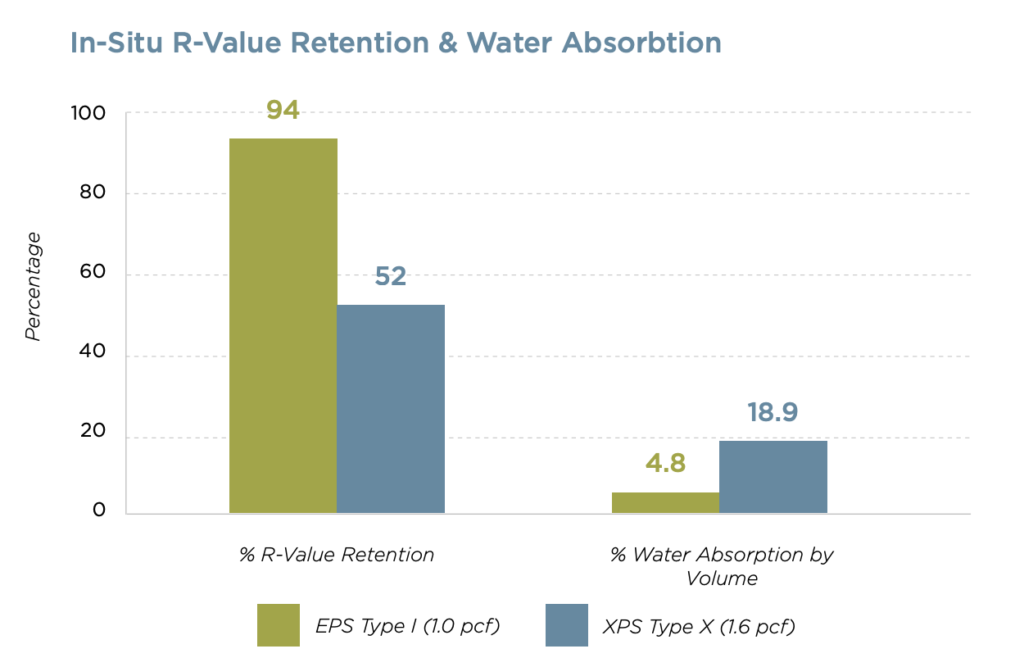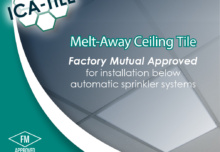EPS R-Value
When you are making a decision between EPS and XPS and you prefer the higher R-Value option, EPS is the answer. In recent years, studies continue to show how EPS outperforms XPS on all levels of R-Value. Below are the results of three research studies performed by the EPS Industry Alliance on the R-Value of EPS vs XPS. Their website has a wealth of information and research to support EPS and its application as a building material.
EPS R-Value Retention & Water Absorption
The EPS Industry Alliance completed an impressive 15-year in-situ research study on the comparison of EPS vs XPS R-value in below grade installation when placed side by side. They unearthed the findings and EPS has come out on top, again. The water retention of EPS was significantly less than XPS as stated in the graph below.
EPS R-Value Thermal Performance
Another research project done by the EPS Industry Alliance was a 30-month exposure study. Here is an excerpt from the highlights of the study:
“Testing confirmed that all types of EPS insulation retained their specified thermal and mechanical properties even after being subjected to in-situ freeze-thaw cycling.
- The moisture content of EPS insulation directly exposed to high moisture content soil conditions was found to be less than 0.5% by volume on average at the end of the exposure.
- In-situ thermal performance of the EPS insulation monitored during the exposure period remained constant, i.e., there was no loss in thermal resistance.
- Laboratory test results from samples removed after the exposure confirmed thermal performance and durability, i.e., there was no change in material properties.”
EPS Mold Resistance
Unlike the alternative options for building materials which require special surface treatment to protect from mold growth, EPS is often installed untreated. The Technical Bulletin published by The EPS Industry Alliance states:
“Expanded polystyrene (EPS) rigid foam insulation was tested in accordance with ASTM C1338 “Standard Test Method for Determining Fungi Resistance of Insulation Materials and Facings” which is used to evaluate the ability of new insulation materials to support five types of fungal growth. Third-party testing conducted by SGS US Testing Company, Inc. demonstrates that under laboratory controlled conditions favorable for the growth of mold that EPS scored no traces of growth over a 28-day incubation period.”
Why is this important to contractors and builders?
Not only does EPS hold it’s R-Value over time but it is also mold resistant making it an ideal material to install in below grade construction where conditions are optimal for mold growth.
As you can see, EPS performs in the areas that matter: stable thermal R-value, minimal moisture absorption and resistance to mold. It becomes an obvious choice for your construction materials. And did we mention the added cost benefit when you choose to switch to EPS as your preferred building material? Find out how much you could save by requesting a FREE EPS QUOTE for your next project with ICA’s sales team.








